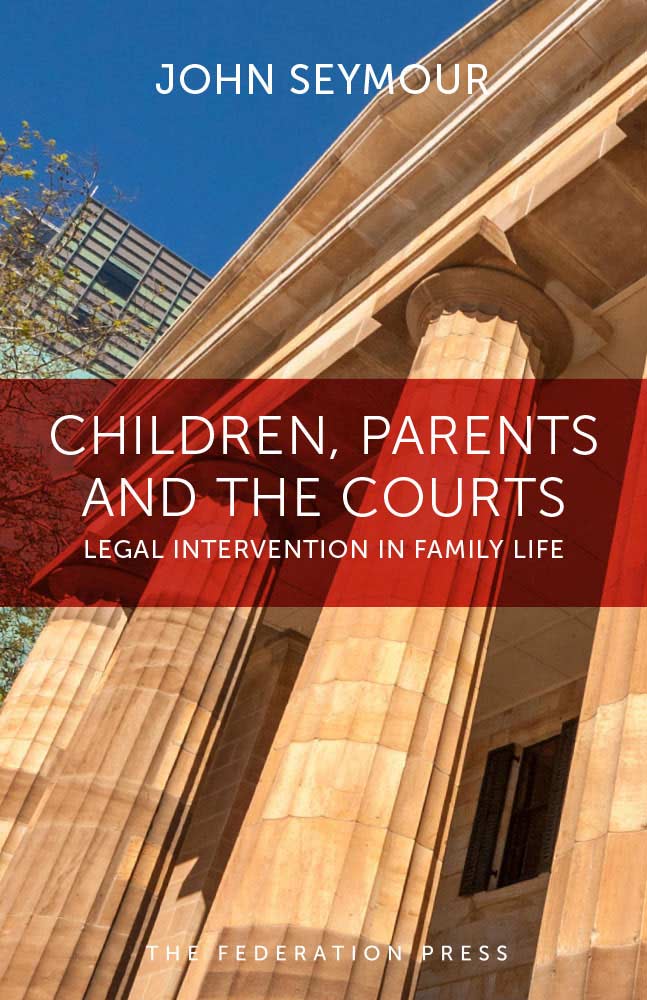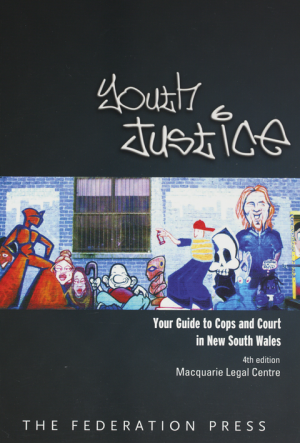The family can be viewed as a private world, one into which courts should be reluctant to intrude. In our society, recognition of the specialness of the parent/child relationship is well entrenched: “The best person to bring up a child is the natural parent.” Yet legal intervention in this relationship may be justified when children need protection.
The resulting tension is the principal subject of this book. An Australian court dealing with a child must seek the outcome most likely to promote that child’s “best interests”. The book includes case studies illustrating the difficulties magistrates and judges have encountered in applying the best interests test. These cases also prompt questions about the capacity of courts to make effective orders when children are not receiving adequate care: a court order cannot re-make a child’s life. The first part of the book looks at the various issues that may arise in regards to different views on what “best interests” may be. Cultural diversity must also be taken into account. To what extent should Australian law seek to accommodate differing views on child-rearing? This question is particularly relevant to an examination of the impact on Indigenous communities of current child protection policies. Cultural bias can be criticised, but the system should not lose sight of the goals and standards expected of procedures designed to achieve what is best for all children, Indigenous and non-Indigenous.
In addition to considering cases in which parents’ authority is challenged, Part II of the book addresses another issue. When a dispute arises about the medical treatment of a mature child, the child may assert the power to give the necessary consent to, or to decline, the treatment. If the adult world disapproves of the child’s decision a court can override it on the ground that the child is vulnerable and needs protection. Is this a benevolent application of the “best interests” test or unwarranted paternalism?
Introduction
Part I: Disputes About Children’s Upbringing
1. A Landmark Case: Applying the Paramountcy Principle
Background to the Decision
The Outcome: What Happened to Carlos?
The Lessons to be Learned
Notes
2. Child Protection: The Law
The Paramountcy Principle in Australia
Child Protection Acts
The Problem of Definition: The Current Laws
Adapting the Paramountcy Principle
The United Nations Convention on the Rights of the Child
The Family as the Fundamental Group Unit of Society
Parental Responsibility
Doubts about the Role of the Law
Notes
3. Child Protection: The Law in Action
A Troubled Family
Severing Family Links
Andrew’s Case
Differing Views of the World
Notes
4. Child Protection: Some Dilemmas
The Meaning of “Best Interests”
Preserving the Family Unit
Child Protection Services: The Reality
A Tragic Case (But One of Many)
Putting the Case in Context
Notes
5. Best Interests and Cultural and Racial Identity
A Painful History
Self-determination
Applying the Child Protection Laws to Aboriginal Children
The Law’s Recognition of Cultural Differences
The Law’s Dilemma
Respecting the Cultural Identity of Aboriginal Children: Some Questions
A Compromise?
Notes
Part II: Disputes About Decision-making
6. Another Landmark Case: A Challenge to Parental Authority
Re-defining Parental Authority
The Decision
Gillick Re-visited
A Revised View of Parenting (and Some Doubts)
Allowing Children to Make Their Own Decisions
Notes
7. Questions About Children’s Freedom to Make Their Own Decisions
Re R and Re W: The Eclipse of Parental Powers?
The Role of the Courts
Some Questions
Notes
8. “Still a Child”
X’s Case
Some Reflections
Overriding Parents’ Wishes
“Gillick Competence“ and Autonomy
The Power of the Courts
Notes
9. Parental Powers: Some Limitations
Some Illustrations
Some Reflections
Notes
10. A Triangle
Intervention in the Parent/Child Relationship
Best Interests
How the Law Works
Disputes about Decision-making Powers
The Role of the Courts
A Final Word
Notes
Bibliography
Index
I really enjoyed reading this book-not simply because of its easy style, despite an in-depth analysis of legal cases and judgements-but also because it presented research-based discussion of the multi-faceted issues presented to social workers when dealing with children, families and the Courts. The author, John Seymour, uses over 70 legal cases to illustrate the challenges presented when ‘the law intervenes in family life’. These challenges are well known to social workers, particularly, but not only those engaged in child protection. I hope that in exploring these concepts, social workers in all fields will be encouraged to reframe their practice, informed by a deeper understanding of the complexity of what the author calls the ‘Triangle of children, parents and the law’.
While written from a lawyer’s perspective, John Seymour brings his background experience-as Commissioner he produced one of the earlier Inquiries into Child Welfare (ALRC Report 18) in 1981-and comments on the difficulties faced by social workers in child protection, such as limited supervision, high caseloads and the often unsolvable dilemma as to what is in the child’s ‘best interests’. Nonetheless this book should prove extremely useful in explaining the manner in which Courts operate, and how judges come to their decisions.
Anita Phillips, Developing Practice, 2017, 48
This book is a great starting point for any practitioner who is new to working in a legal setting or who might be confused by the legal system in which we work in the complex field of child protection. The book is set out in easy-to-read chapters, in plain English, and can be read in bite-size chunks. The book is divided into two parts-the first part focuses on child protection legislation and decision-making, while the second part focuses on medical decision-making relating to children. The author, John Seymour, has also referenced a variety of legal case studies. These are helpfully referenced and summarised at the end of each chapter, so that there is an easy flow and you can make sense of the case studies.
The book helps the reader understand the concept of the best interest and the paramountcy principles; and to think about where the legislation developed from and how there are small differences in each jurisdiction but in essence the legislation has similar intentions. …
The book can be a great resource for professionals working within a legal context with children and young people, particularly in the area of child protection and out-of-home care, the case studies presented can aid discussion and thinking in teams, and though complex case reviews. The author John Seymour brings the worlds of law together with child protection practice to show the interface between the two and the dilemmas of both making it an excellent resource for both child welfare workers, and social work, welfare and legal students.
Julia Carroll, Developing Practice, 2017, 48
This book is a comprehensive yet thoroughly readable summary of the law relating to children throughout the Commonwealth and states, charting both its historical development and its present-day application. In setting out the background to many current legal dilemmas … the author provides a very helpful context with a high degree of insight.
Adrian Stone, InPrint, Law Institute Journal Victoria, April 2017
[T]his is a book that not only has appeal to lawyers but is written in a style which will make it useful to all parents and, for that matter, many children as they emerge from their childhood. … As you examine this book, you will realise that the decisions that courts have made in particular cases can be justified, not so much as applications of rules of law or prior decisions, but as the courts’ endeavouring to come to a decision which recognises that the welfare of the child remains paramount.
The book addresses confronting issues, but it provides a wakeup call suggesting that, as a society, we can and must do more to protect our precious children even if, at times, we are protecting them from themselves, their family and, perhaps now, we might also have to add, their guards.
Brian Morgan, Hearsay, November 2016, 77
Written sensitively with objective balance, John Seymour paints a succinct and plain-English picture of when and how the law, the courts and administrators in Australia may intervene to protect a child’s “best interests”. What this picture reveals is that although Australian judges, magistrates and public servants have the best intentions, they are limited in what they can do under the law. The same law is informed by prevalent cultural assumptions about the synonymity of parental rights and authority with duty and responsibility, preferences to keep (biological) families together, and after the legacy of Australia’s Stolen Generations, policies mitigating state intervention. Seymour’s analysis also highlights the issues caused by limited resources available to Australia’s legal justice and administrative systems. … This book is recommended for parents, teachers, judges, magistrates, practising lawyers, law teachers, students and anyone with professional duties involving children.
Magdalene D’Silva, Law Society Journal, October 2016
This exceptional monograph (187 pages including index) deals with some of the more difficult and important issues of modern Australian society; being the intervention by courts into family life for the protection of children. It is not a criticism of the Courts in the very difficult task which they undertake in this challenging area, to observe that, as yet, no fully acceptable framework has been established for protecting vulnerable children in difficult family circumstances. This thoughtful and insightful work seeks to identify why that is so. In particular, it considers the flaws in the “best interests of the child” test as it is applied in various courts. Not only is that test somewhat devoid of suitable meaning or content, the courts often lack the ability to frame orders to achieve the intended result. That is particularly so in circumstances where neither parent has the ability or inclination to properly care for the child. Moreover, the “best interests of the child” test has the difficulty that it struggles to accommodate different views on child rearing and cultural diversity.
The second part of this work deals with the issues which arise in relation to the medical treatment of children and, in particular, the adult child who might have limited ability to determine matters in their own interest.
This book is an extremely useful contribution to the discussion around these difficult and problematic questions. It has the advantage that the writing style is fluid and clear such that the concepts arise readily from its pages.
Queensland Law Reporter – 26 August 2016 – [2016] 33 QLR






